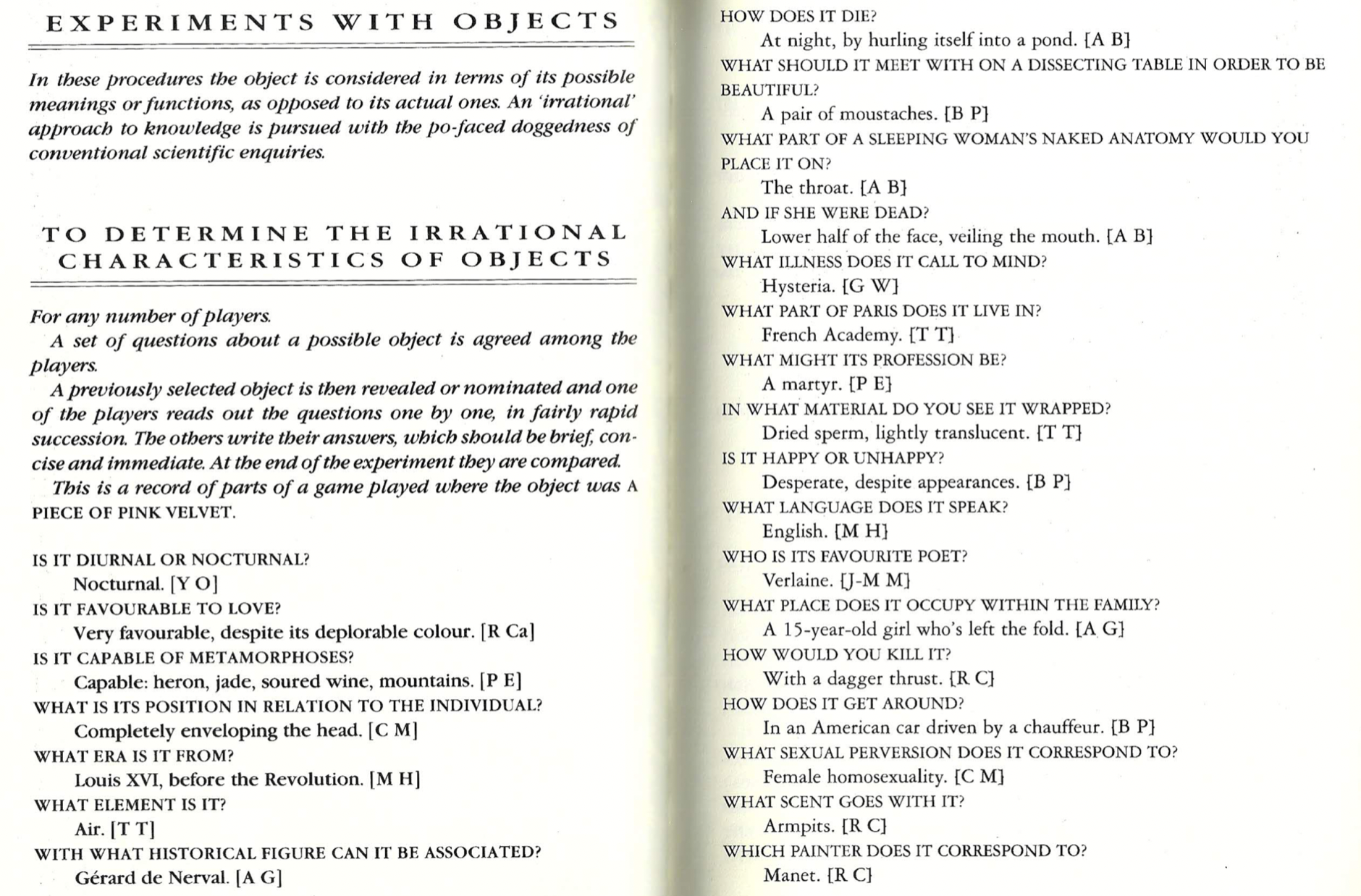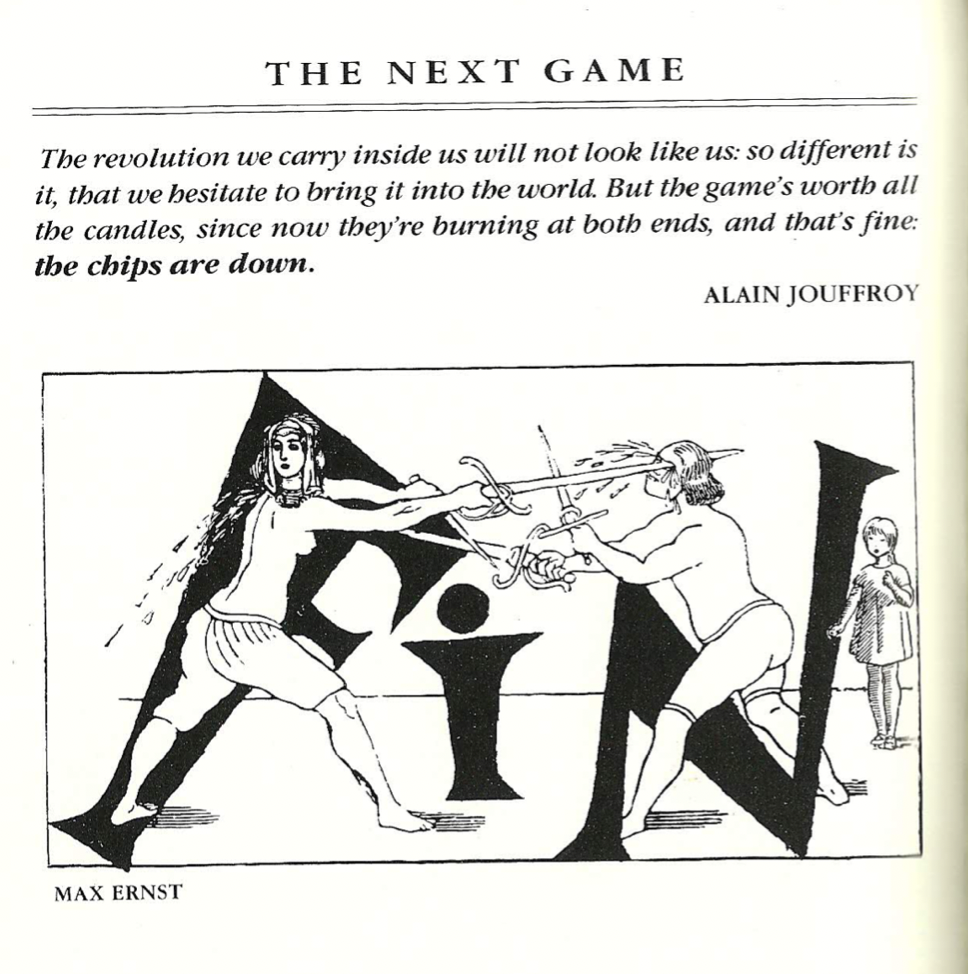“It is not to belittle Surrealist activity — as it has unfolded from 1924 to the present day — to consider it as a game, in fact as The Great Game, whose prizes in the eyes of those who played and lived it, can be calculated in promises of freedom, love, revolution, and in anything else that intransigent desire can aspire to.”
– Phillipe Audouin
At its best, Surrealism is played for love of the game. The eye isn’t on the outcome (since no outcome is definitive) so much the process.
Theoretically, the games began with Johan Huizinga’s Homo Ludens, a book that influenced everyone from Michel Leiris to Louis Aragon. Roger Caillois took it further in Man, Play, and Games, where he stipulated the conditions for a game as follows: A game must be free (or not obligatory), separate (circumscribed in time and space), uncertain (the result is not predetermined), unproductive (no goods are produced), governed by rules, and associated with make-believe.
The surrealist “experiments with objects” also fall under this game-like structure. I’m sharing this one from The Book of Surrealist Games because I can’t imagine a more delightful use of a piece of pink velvet—- and maybe we should all be determining the irrational characteristics of objects at a time when realism’s impetus for description misses so many dialectical possibilities.
En fin:

